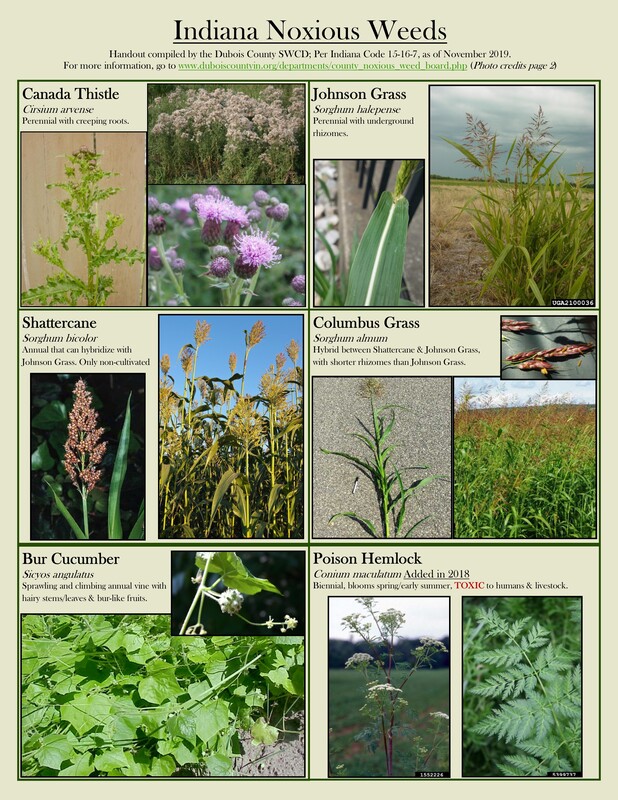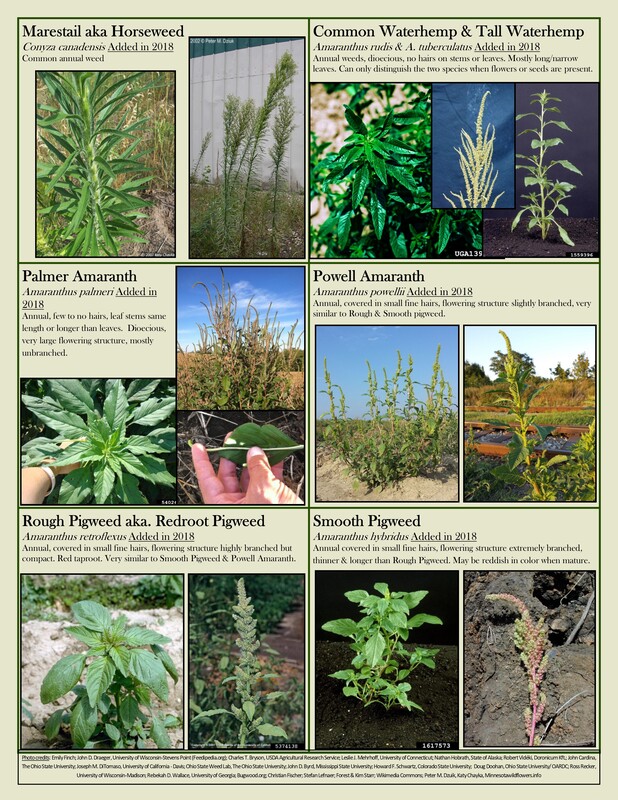What is a noxious weed?
Some plants have been designated by the state of Indiana as Noxious. Noxious weeds can include both native and nonnative plants, and vary from objectionable weeds to highly destructive plants that are difficult to control.
So what does that mean?
So what does that mean?
- Plants classified as noxious weed seeds are regulated through the Indiana Seed Law by the office of the Indiana State Chemist. These laws were written to reduce the amount of noxious weeds that could enter or be spread around the state as a contaminant in bought and sold seed. It is actually a labeling law and it sets limits of the amounts of weed seed that can be in sold seed and not be stated on the labeled.
- Plants classified as noxious weeds are specified in the Destruction of Detrimental Plant Laws, which requires property owners to control and contain them. These laws are enforced locally by counties and townships, but enforcement has varied as many county noxious weed boards have dissolved. The 13 plants currently regulated are shown below. In Dubois County, Johnson Grass, Poison Hemlock, and Canada Thistle are noxious weeds of largest concern (all 3 are also considered invasive). For more information, or to file a noxious weed complaint, contact the Dubois County Weed Board.
Can a noxious weed be native?
Yes, unlike with invasive plants some noxious weeds are native to Indiana but are harmful in agricultural settings. These include Marestail and Bur Cucumber.
How do I identify a noxious weed?
Check out the following handout to view photos of the 13 plants classified as noxious weeds in Indiana. (Click the link below the photos to view or download the document as a pdf.)
| Noxious Weed Handout | |
| File Size: | 3611 kb |
| File Type: | |
I found a noxious...now what?
|
To file a complaint with the Dubois County Weed Board about an uncontrolled noxious weed population, complete the following form.
|
If you need technical assistance on identification or control contact our office to speak with our Invasive Species Specialist, Emily Finch. For non-invasive noxious weeds contact Kenny Eck at the Purdue Extension office.
| ||||||
More Information...
For more information on noxious weeds of most concern in Indiana, click on the following links.
- Poison Hemlock Webpage (Factsheet below)
| |||||||
- Johnsongrass Webpage (Factsheet below)
| |||||||
- Canada Thistle Factsheet
| |||||||


